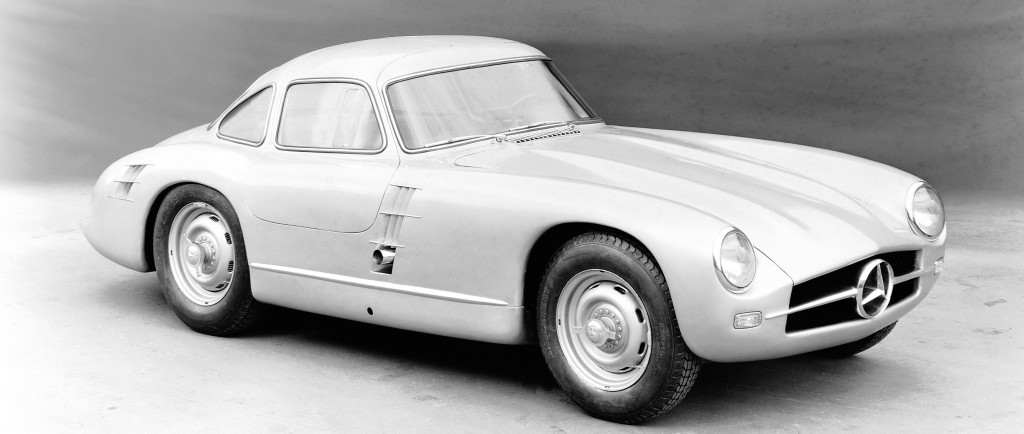
The Hobel, a Mercedes-Benz 300 SL so nicknamed because its front-end design reminded people of a carpenter’s plane, returns to the site of one of its record-breaking runs July 17-19 for the Solitude Revival 2015.
“The Solitude Revival commemorates a golden age of motorsport in Stuttgart,” Michael Bock, head of Mercedes-Benz Classic, said in a news release.
“This year,” he added, “Mercedes-Benz Classic is celebrating the incredibly successful 1955 season – in which the 300 SL played an instrumental role.”

Chassis 00011/53, aka the Hobel, was the prototype vehicle for an improved Mercedes 300 SL racing car. A new direct-injection system boosted the output of its inline six-cylinder engine by 40 horsepower, to 215 horsepower, compared with the former carbureted powerplant. It also had a transmission installed in a transaxle setup with single-joint swing axle rear suspension. Air ducting was updated and vehicle weight lowered. The reduced frontal area around the car’s nose led to its nickname.
The car was completed early in 1953. That October, in anticipation of the 1954 season, Mercedes’ racing team manager Alfred Neubauer arranged a test session for one of the original 1952 300 SLs and the new prototype. To stage the test at the Solitude racing circuit near Stuttgart, Mercedes had to hire 150 policemen to close off the public roads that comprised most of the historic track.

The fastest lap of the day was posted in the 00011/53 prototype by the youngest driver, Hans Herrmann, who had made his F1 debut in 1953 and stunned spectators in the 1954 Mille Miglia when he had navigator Herbt Linge duck as Herrmann drove his Porsche 550 Spyder beneath a railroad gate and beat an oncoming train across the tracks. In the 00011/53 prototype, Herrmann completed the 11.7-kilometer circuit in 4 minutes, 52 seconds, faster than any of the Mercedes veterans, incuding Karl Kling, Hermann Lang and Rudolf Uhlenhaut.
“Our up-and-coming young driver Hans Herrmann put in a surprising performance, being the only one to finish in under five minutes and breaking the official lap record held to date by motorcyclist Kavanagh,” Neubauer noted in his report that day. He soon signed the young driver for the full 1954 season.
However, the Hobel never raced. Mercedes decided to switch to Formula One for the 1954 racing season.
Herrmann, who in 1970 helped Porsche post its first overall victory in the 24 Hours of Le Mans, serves as one of Mercedes-Benz Classic’s ambassadors and is expected to be back in the 00011/53 car during the Solitude Revival, when the car will be driven around the track on Saturday and on display the other days.

The first Solitude Revival was held in 2008. The second was staged in 2011 but since then has become an every-other-year vintage racing event open to cars built before 1976.
A motorcycle hillclimb sprint race from downtown Stuttgart up to Solitude Castle west of the city dates to 1903. The destination moved from the castle to Schutzenhaus only a few years later. Cars began competing in 1922 and three years later a 22-kilometer racing circuit was devised. A new circuit, the Solitudering, located south of the castle, debuted in 1935. The track was the home to Formula 1 racing from 1961 until 1965.






Great article! I discovered this amazing portuguese technical drawer, António Eiras with 30-something years of drawing, who recently wrote a very interesting article about the Mercedes 300 SL, definitely worth checking out: http://www.antonioeiras.com/#!mercedes-300sl/c1z8q